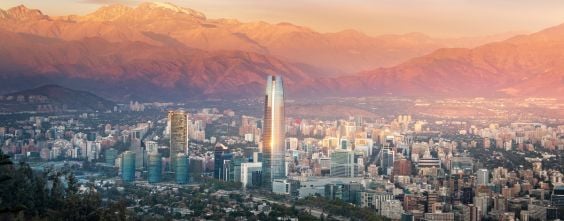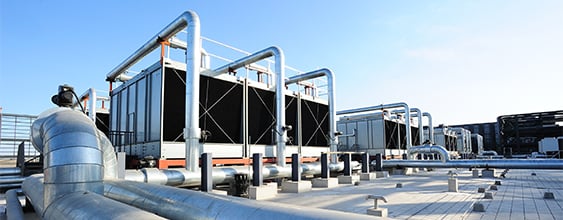COVID-19 may be the most significant public health crisis in generations – but it’s far from the only one. From SARS and H1N1 to Zika and Ebola outbreaks, it’s a pervasive reality that severe viral outbreaks are part of the healthcare risk landscape. For the foreseeable future, these risks are here to stay. But as we’ve seen in the past, it’s possible for disease control to become less of an unsurmountable crisis than a challenge we are resilient enough to handle.
From a buildings and infrastructure perspective, the new hospitals we’ve recently built in Canada are in much better shape to react to pandemic situations than our aging healthcare infrastructure. We learned a great deal from the SARS epidemic in 2003, particularly in larger cities and healthcare centres. For one thing, procedures for rapid case identification and isolation facilities was one of the major lessons hospital facilities in Toronto gained from the experience. However, while newer facilities were built with these considerations in mind, older hospitals may have some structural issues to deal with.
Agile response
There will certainly be service gaps in any healthcare system not designed for a sudden large influx of severe cases, on top of the community’s usual healthcare needs. In the short term, this calls for a rapid, agile response. The immediate need within the building space is for two key supports:
After these immediate needs are met, we will see how the changes we’ve made in recent years operate under a large-scale service surge. Newer hospitals in Canada are designed to function as post-disaster facilities, fully operational even in the case of large disasters like earthquakes or floods. However, when designing for these disasters and their associated influx of patients, we usually plan for a local emergency. Even large disasters, like the recent bushfires in Australia or Hurricane Katrina in New Orleans, are typically localized in scale. In a truly global crisis like this one, our supply chains are impacted, resources are spread thin, and all healthcare centers are facing a simultaneous surge. How do we scale up resilience to a global scale?
Global expertise, local solutions
In a global pandemic, we face shared challenges on a massive scale — but we also have shared solutions. Multinational organizations can lean even further on the ability to leverage global expertise for local solutions.
For example, WSP is advising on rapid responses to COVID-19 impacts in local communities around the world. Some of these responses include converting non-medical facilities like stadia and convention centres into temporary hospitals, and designing new/extended healthcare facilities using modular construction, among other solutions.
We are also seeing local solutions to supply chain issues, as domestic companies retool their production to close the gaps. In a global economy, many of our supply chains don’t actually originate in Canada, which does keep the cost of goods low. But as we’re seeing, we are able to revamp local production when needed to localize our supply of mission-critical goods like hand sanitizer or medical personal protective equipment (PPE).
In Canada, the main focus in on reactive work right now — and for consulting engineers, a big piece is around helping clients find the right questions to ask to best adjust to these new, immediate challenges.
Long-term changes
As we move through this period of rapid change and adjustment, there is also an opportunity to talk about long-term solutions. The conversation is already shifting from a hospital-centric one, to a broader discussion of other public buildings as well.
How do we design commercial buildings to optimize health? As we’re seeing in the context of a mass contagion, our physical spaces can play a large role in our communal health. What sort of cleaning protocols should we put in place? Are there certain building materials (copper, for instance) that could be used for high-touch surfaces like elevator buttons? What, if any, are the liabilities employers may face for requiring attendance in a potential transmission zone — and how could we minimize that liability?
Another significant discussion to come will that of investing in health measures that may run counterintuitive to our current efficiency practices. For instance, many commercial buildings seek to limit fan power, since this can save a significant amount of energy costs. However, good air filtration is a huge factor in better health outcomes, particularly if there are pathogens at play. We may see ventilation become a major concern, even if it does run counter to our past thinking about energy-efficient buildings. Air circulation and sterile surfaces are a few of many lessons that we could translate from healthcare to commercial settings, in a more cost-effective way.
For the moment, most of the big changes we are seeing are rapid and reactive. But is COVID-19 a big enough event for us to move away from reactivity and start taking these measures pre-emptively? It seems likely that we will inherit some long-term changes from the lessons we learn.
Resilient communities
The last and most critical piece of resilient healthcare is resilient people. The reaction of the public at large, particularly in response to measures like physical distancing and shelter-in-place, is a testament to the importance of human behaviour in the healthcare context. When we see the majority of the country taking these actions together, that is resilience.
All the infrastructure in the world is effectively useless without the support and cooperation of the community. Your people are the foundation that underpins the success of everything. It’s relatively simple to build a state-of-the-art hospital — even in a remote location with big health challenges. But staffing it with the necessary expertise can be a massively difficult undertaking.
With over 80 per cent of the population living in urban centres in Canada, we have cities that are incredibly well-resourced with healthcare specialists of all stripes. The piece we don’t often talk about, however, is the challenge this creates for our rural and remote communities. The people who migrate away from those remote communities are often the brightest achievers, the top doctors, and the most specialized experts. When that occurs, we see even greater disparity between urban and remote communities. It’s important that we find mobile healthcare and staffing solutions for these communities, to build resilience regardless of population count.
We also must consider the healthcare needs of vulnerable populations, such as the elderly in long-term care homes, and the housing insecure. A public healthcare system is only as strong as its most vulnerable patients, and nowhere is this more apparent than during a pandemic. For healthcare to be truly resilient, we must see beyond the statistics and prioritize people.















